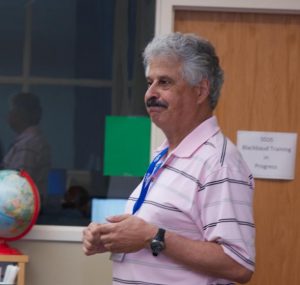In this, my penultimate blog as Executive Director for the Jim Joseph Foundation (read the first blog in this series here), I revisit a theme I have discussed numerous times in the past decade.
For years, I have asserted that foundation personnel who conduct their business as transactions of authority and power—as opposed to a series of ongoing interactions in pursuit of partnerships to make enduring changes in the world—fail to optimize the potential of contemporary Jewish philanthropy. From both a professional grantmaking and Jewish values perspective, relational philanthropy that cultivates funder-grantee trust is an asset tangibly benefiting both participants. The ultimate good, of course, redounds to beneficiaries of high performing Jewish 501c3 organizations and the righteous work they do.
Even a cursory review of journal articles, social media blogs, and association publications on education and philanthropy surfaces frequent references to “trust.” The references occur in diverse places: Education Week, Jewish Funders Network publications, Grantmakers for Effective Philanthropy monographs, eJewishPhilanthropy, Huffington Post, Stanford Social Innovation Review, Teachers College Record – just to name a few.
The ways in which trust is described are myriad, often invoking Jewish sources (for items in Jewish media publications), but rarely citing any of the considerable research on trust produced in the disciplines of psychology, communications, and economics. JFN’s newly released Funders and Power: Principles for Honorable Conduct in Philanthropy, for example, encourages funders to “take covenantal responsibility” for grantmaking as a relationship-based “sacred trust” with funders’ community of grantees. Stuart Mellan, CEO of the Jewish Federation of Southern Arizona, lauds network weaving as an effective community building strategy, noting that “community requires trust.” Mellan observes that “trust can be built, trust can be broken; and broken trust can be healed. In the end trust is achieved when individuals of good intention approach the building of their relationship with integrity.”[1]
In the secular world, an Education Week article from September of this year entitled “Are You Trusted? It Makes All the Difference” states flatly that “trust is the foundation for learning.”[2] A July Huffington Post article highlights a GEO blog whose four authors claim “driven by a sheer desire to help philanthropy be most effective, leaders of philanthropy serving organizations are embracing a mindset characterized by trust, openness and generosity of spirit”[3].
We exercise trust in our daily lives. You trust your Uber driver will transport you to your desired destination efficiently and safely. You are piloted through clogged city streets by a person you have never before met in a vehicle you have no idea is fully operational with all of its functioning safety features. You bring a Task Rabbit contractor into your home for a two-hour job of assembling a freshly delivered set of Ikea bookshelves, not knowing this individual from any stranger on the street. Your doctor prescribes new medication for a chronic back pain and you dutifully ingest pills typically not having any real idea about what the chemical ingredients will do, iatrogenically, to your body. And you permit a certificated technician to take remote control of your computer to clean up a virus, never even meeting the empowered engineer face to face to whom you provide access to all kinds of confidential information.
The Science of Trust
These quotidian acts are neither baseless nor blind. There is actually science precipitating this behavior, believe it or not, that is both psychologically and biologically based. Humans could not manage their daily affairs in a viable manner without repeated acts entrusting others – and themselves – to do what is implicitly expected of them. Ultimately, “trust isn’t a luxury. It’s a tool we need to get by when we can’t make it on our own; it’s a means of survival for those that must depend on others”[4].
Moreover, while I am sometimes leery to reference research on the corporate sector for guidance in foundation work, ample study of consumer behavior and attitudes shows clearly that companies perceived to be trustworthy outperform those which fail to earn consumers’ trust.
Curiously, when it comes to philanthropy, my experience has been that trust is a currency in short reserve. Arguably, “too often, philanthropists behave like bank loan officers, giving grants in return for prescribed programs and outcomes. Instead, philanthropists should create collaborative relationships with grantees that cultivate critical thinking, learning, and adaptation”[5].
With an understanding of the importance of building trust, here is the conundrum: foundation employment confers privilege of status on its personnel, both professional and lay. Having access to largesse results in the appearance of belonging to a higher social class, which diminishes reliance on others. And “the data are clear: higher social class often equals less trustworthiness.”[6]
The Jim Joseph Foundation Approach
I realize it would be uncomfortable for my foundation colleagues who work ardently to support Jewish education to think that they might be taking advantage of their particular position of influence. My peers comport themselves with consummate professionalism. The position I have taken repeatedly, and the one I am assuming here, is a function of an approach—which I describe as relational philanthropy—the Jim Joseph Foundation has deliberately cultivated for more than a decade. Its modus operandi, as I wrote in 2012, is a one in which:
Funders, grantees, evaluators and consultants alike align around common, consensually agreed upon goals–both for projects themselves and for field-related knowledge creation and dissemination. Grantees’ transparent sharing of progress made and challenges encountered in ongoing conversations with foundation and evaluation personnel leads to real time learning. Foundations in turn become ‘conduits of the nonprofits’ knowledge’ to the field of Jewish education in what becomes effectively, a two-way distribution system[7].
I believe with conviction and a modicum of certainty that the grantmaking the practices with its grantee partners drives efficiencies and effectiveness into the field. At this moment of significant Foundation transition, to assist incoming President and CEO Barry Finestone and Foundation Directors in their future philanthropic enterprise, the Foundation is preparing to commission a meta-synthesis of 100 evaluations of grants it has awarded. This comprehensive information, coupled with feedback from two Grantee Perception studies previously completed, I am confident will create a convincing case motivating the Jim Joseph Foundation to continuously strive to improve its Relational philanthropy practices.
The kind of philanthropy the Foundation enacts is not formulaic. As I have noted in previous blog posts and articles, “business gets done in conversation. Relations develop. The philanthropic practice is one of active listening, networking, and sharing information in reciprocal exchanges of knowledge (see Ed Skloot’s Beyond the Money). Trust among all participants is paramount”[8].
Nothing is mechanistic about this work. Funders and grantee personnel, most often with appropriate technical assistance experts, interact regularly and on a scheduled basis. All individuals must bring good intention and positive attitude to every conversation:
- Foundation professionals must steadfastly evidence a propensity to accept at face-value information shared with them by grantees. They need as well to manifestly exhibit a valuing of grantees’ work experience, acknowledging grantee proximity to the initiative as a source for critically important data collection.
- Foundation professionals and evaluators ask relevant questions of grantees during update calls and/or meetings.
- Grantees contribute invaluable “on the ground” commentary and insightful self-reflections on the initiative they administer, manage, and/or implement. Grantees occasionally push back on what is seen as funder misperception of a key aspect of the initiative.
- Participants are forthcoming and candid. They devote relentless attention to the purpose of the funded initiative, its metrics and target outcomes, and its anticipated results. Midcourse corrections often occur, as is expected.
Together, funder and grantee expressly affirm shared commitment to achieving understanding of, and success in, objectives and goals of the funded initiative. The relationship is one of dynamic inter-subjectivity, in recognition of the mutual gain at stake, and without any compromise of respective professional standards of conduct.
Personal authenticity, especially as exhibited in dialogue that reveals a genuine appreciation for a world in which I/you interplay promotes mutual respect and interpersonal trust, is of superordinate importance. Conference and Skype calls, Google hangout chats, site visits and substantive grantee reporting, are woven together into a web of relationships.
Looking to the Future
The world has obviously changed in my nearly eleven years as Executive Director of the Jim Joseph Foundation. Consider the following, by way of a few examples: instant, real time access to information; field disintermediation; premiums placed on foundation transparency and accountability; blending of public, market, and social sectors; overt, verbally violent and physically destructive anti-Semitic and anti-Israel assaults on Jews and the Jewish people. Never in my lifetime have I been as aware as I am today of the benefits collaboration and carefully fashioned organizational interdependencies offer Jewish education.
“Different than the traditional approaches of coordination and cooperation, real collaboration creates the key opportunity model of today’s world,” grounded in “the ‘bedrock’ of collaboration: trust. Without trust, collaboration is merely cooperation, which fails to achieve the benefits and possibilities available to true collaborations in the knowledge worker age.”[9]
Finally, implicit in Relational philanthropy is an assumption that a community structure of knowledge production, enabling the Foundation and all of its stakeholders to interact with one another in relational contexts, creates the greatest likelihood that the Jim Joseph Foundation will be a demonstrably effective grantmaker (I will share specific examples of this knowledge production in future blogs).
My fervent hope is that founding Directors of the Jim Joseph Foundation, exceptionally dedicated professionals and staff, and I have bequeathed to successors purposeful, distinctive, practical, powerful relational approaches to strategic philanthropy in support of Jewish education.
[1] Mellan, Stuart. Weaving Community: One Perspective on Federation Work. eJewish Philanthropy. September 2016
[2] Berkowicz, Jill. Myers, Ann. Are You Trusted? It Makes All the Difference. Education Week. September 2016
[3] Enright, Kathleen. Essel, Christine. Jamison, Nancy. LaPointe, Ellen. A Watershed Moment for Philanthropy Infrastructure. The Huffington Post. July 2016
[4] DeSteno, David. The Truth About Trust: How It Determines Success in Life, Love, Learning and More. Hudson Street Press, 2014. Pg. 126
[5] Easterling, Douglas. How Grantmaking Can Create Adaptive Organizations. Stanford Social Innovation Review, Fall 2016, Volume 14, Number 4. Pg. 46
[6] DeSteno, David. The Truth About Trust: How It Determines Success in Life, Love, Learning and More. Hudson Street Press, 2014. Pg. 132
[7] Frank Ellsworth and J. Lumarda in From Grantmaker to Leader. Edelsberg, Charles M. Working in a Relational Way. October 2012
[8] Edelsberg, Charles M. Working in a Relational Way. October 2012
[9] Covey, Stephen M.R. The Speed of Trust: The One Thing That Changes Everything. Free Press, 2006. pg. 256
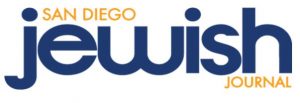 On a Sunday earlier this month, I witnessed the burgeoning future of Jewish teen education in San Diego. As part of the new Motiv Initiative–the Jewish Teen Initiative in San Diego supported by the Jewish Federation of San Diego County, the Lawrence Family JCC, Jacobs Family Campus, and the Jim Joseph Foundation—hundreds of teens came to learn about, and to do, service at its first Teen Service Summit.
On a Sunday earlier this month, I witnessed the burgeoning future of Jewish teen education in San Diego. As part of the new Motiv Initiative–the Jewish Teen Initiative in San Diego supported by the Jewish Federation of San Diego County, the Lawrence Family JCC, Jacobs Family Campus, and the Jim Joseph Foundation—hundreds of teens came to learn about, and to do, service at its first Teen Service Summit. First, a number of workshops throughout the day led by charismatic and passionate adults addressed everything from Passion to Profit: Social Entrepreneurship to Gaming for Good: Using Entertainment to Give Back to Telling Your Service Story Through Poetry and Performance. The Social Entrepreneurship workshop was led by Sarah Hernholm, Founder of Whatever It Takes (WIT), an organization that helps launch teen entrepreneur endeavors. Teens were challenged in the workshop to share what they care about, or challenges in peoples’ lives they want to address, and envision ways they could create change for good with help from WIT and fellow teens within the program. They shared their concern for environmental degradation of our oceans, for physical fitness and healthy eating, and a strong desire to tackle substance abuse.
First, a number of workshops throughout the day led by charismatic and passionate adults addressed everything from Passion to Profit: Social Entrepreneurship to Gaming for Good: Using Entertainment to Give Back to Telling Your Service Story Through Poetry and Performance. The Social Entrepreneurship workshop was led by Sarah Hernholm, Founder of Whatever It Takes (WIT), an organization that helps launch teen entrepreneur endeavors. Teens were challenged in the workshop to share what they care about, or challenges in peoples’ lives they want to address, and envision ways they could create change for good with help from WIT and fellow teens within the program. They shared their concern for environmental degradation of our oceans, for physical fitness and healthy eating, and a strong desire to tackle substance abuse. Third, the afternoon session was actually devoted to service, where organizations such as Habitat for Humanity, Keshet, Kitchens for Good, ReSurf, The Thirst Project, and more engaged teens in service with underprivileged neighborhoods and their community. It was a moving and motivating day of learning and action.
Third, the afternoon session was actually devoted to service, where organizations such as Habitat for Humanity, Keshet, Kitchens for Good, ReSurf, The Thirst Project, and more engaged teens in service with underprivileged neighborhoods and their community. It was a moving and motivating day of learning and action. This past summer, at the first ever
This past summer, at the first ever 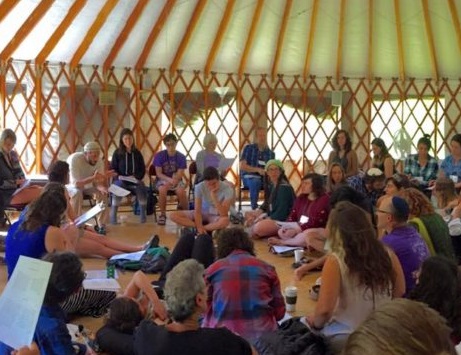
 When the Jim Joseph Foundation was founded in 2006, board members and other leaders in Jewish education held a series of meetings to determine a set of “strategic funding priorities.” While the foundation’s generous benefactor, Jim Joseph, z”l, ensured that Jewish education would be the sole focus of grant awards, he did not specify how the Foundation should pursue his vision. Ultimately, the Board identified three funding priorities, one of which is to increase the number and quality of Jewish educators and education leaders. This priority paved the way for the largest bet the Foundation has made to date – the
When the Jim Joseph Foundation was founded in 2006, board members and other leaders in Jewish education held a series of meetings to determine a set of “strategic funding priorities.” While the foundation’s generous benefactor, Jim Joseph, z”l, ensured that Jewish education would be the sole focus of grant awards, he did not specify how the Foundation should pursue his vision. Ultimately, the Board identified three funding priorities, one of which is to increase the number and quality of Jewish educators and education leaders. This priority paved the way for the largest bet the Foundation has made to date – the 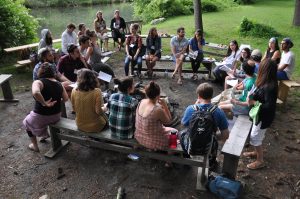
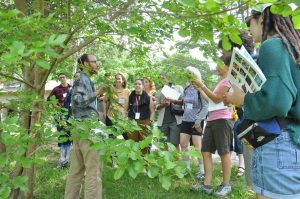 As the Jim Joseph Foundation has discussed, collaboration comes with real challenges. Yet time and again we see that the benefits—creative initiatives; greater reach; more opportunities to scale and to become sustainable—outweigh these challenges. It is not unlike a basketball team where superstars come together, perhaps giving up solo fame and the chance to each score more, for the singular focus of winning a championship, which everyone on the Warriors wants to accomplish again, especially after a particularly disappointing Game 7 loss on June 19th (yes, I remember the date). The recruitment of Kevin Durant was not a singular coach speaking with a player. Amidst many dealmakers on both sides of the negotiation table, four long-tenured Warriors were all a part of the process and the effort to recruit Durant. Each of them knew that bringing him to the Bay Area would greatly increase their chances at another championship season while as a counter-point acknowledging that bringing this addition would likely reduce the shot attempts and general production value of several if not all of these four players.
As the Jim Joseph Foundation has discussed, collaboration comes with real challenges. Yet time and again we see that the benefits—creative initiatives; greater reach; more opportunities to scale and to become sustainable—outweigh these challenges. It is not unlike a basketball team where superstars come together, perhaps giving up solo fame and the chance to each score more, for the singular focus of winning a championship, which everyone on the Warriors wants to accomplish again, especially after a particularly disappointing Game 7 loss on June 19th (yes, I remember the date). The recruitment of Kevin Durant was not a singular coach speaking with a player. Amidst many dealmakers on both sides of the negotiation table, four long-tenured Warriors were all a part of the process and the effort to recruit Durant. Each of them knew that bringing him to the Bay Area would greatly increase their chances at another championship season while as a counter-point acknowledging that bringing this addition would likely reduce the shot attempts and general production value of several if not all of these four players. Children are served best in classrooms and other learning environments that consistently take into account their specific learning needs. The support children receive is most effective when it is offered throughout the entire day of learning—by all educators—as opposed to only specific periods of the day.
Children are served best in classrooms and other learning environments that consistently take into account their specific learning needs. The support children receive is most effective when it is offered throughout the entire day of learning—by all educators—as opposed to only specific periods of the day.